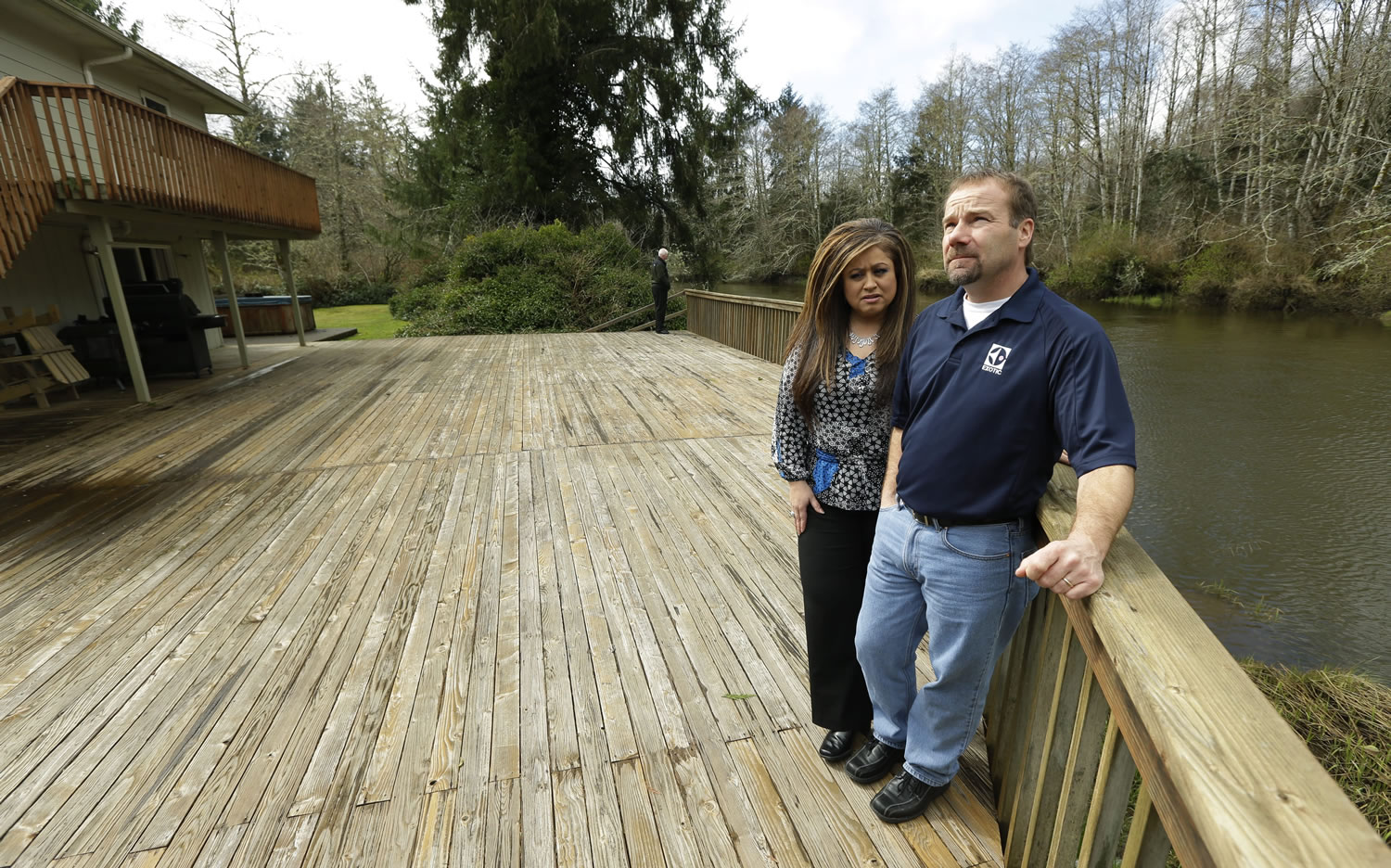OLYMPIA — When Joley Spears bought her three-bedroom Aberdeen home just a few blocks from the Chehalis River last year, she was relieved to find something in her price range that was recently remodeled and had a fenced backyard for the kids.
She knew she was in a flood range and would need a federal insurance policy, but one thing she wasn’t expecting was a potentially significant increase in her flood insurance rates.
“No one told me,” she said. If they had, she says, “we would have bought up on a hill, where I didn’t have to have flood insurance.”
In 2012, Congress passed a law requiring policyholders receiving subsidies to start paying rates based on the true risk of flooding at their properties in an effort to cover a $24 billion deficit in the National Flood Insurance Program. After public outcry over the premium hikes, Congress passed legislation earlier this month pulling back some of the insurance overhaul.
However, while approximately 1.1 million policyholders won’t face immediate dramatic increases under the measure signed Friday by President Barack Obama, they will still be hit with annual premium increases. Homeowners face hikes as high as 18 percent year after year, until the government is collecting what it needs to pay out claims. Owners of businesses and second homes face increases of 25 percent each year.
Washington has more than 13,000 federally subsidized flood insurance policies, according to federal data analyzed by The Associated Press. More than 9,100 homeowners in the state face an annual increase of up to 18 percent, and nearly 4,000 businesses or second homes will see 25 percent hikes each year.
Spears was told that based on homes such as hers, she could face a monthly increase in her premium of up to $800 a month — more than the mortgage on her home.
She has since received notice that her premium would be $240 more a month. Spears — a nursing assistant who supports her husband and two young children on about $31,000 a year — said even that amount is too much, and she fears that she won’t be able to afford to stay in her home.
In the small city of Aberdeen, which sits at the mouths of the Chehalis and Wishkah Rivers and is about 50 miles west of the state capital of Olympia, 84 percent of those receiving subsidies are likely to face increases. In the neighboring city of Hoquiam, about 95 percent of subsidized policies will see increases, according to the data.
Erica Rodman, a real estate agent in the southwestern Washington city of Woodland, about 20 miles north of the border with Oregon, said one listing in her office got a flood insurance quote of $7,500 a year.
If a buyer could afford that sort of monthly cost on flood insurance, Rodman said, that person would likely decide to buy a more expensive home in a different community.
“Why would you choose that home in a flood zone if you’re looking at that kind of bill?” she asked.
Rodman said uncertainty over how FEMA will implement the rate hikes under the new law is concerning.
“It leaves our sellers and our buyers in flux,” she said.
Before the underlying 2012 law, rate increases had been capped at no more than 10 percent. The new law rolls back the instant hikes, but it lays the groundwork for significant increases to be phased in over time.
“We are dealing with unintended consequences,” said Malcolm Bowie, Aberdeen’s public works director. “Honestly, I don’t think anyone really knows the impact.”
He said that he hopes affordability studies that are supposed to be done with the new law will help keep the increases low.
“We’re just hoping that it will be fair,” he said.



